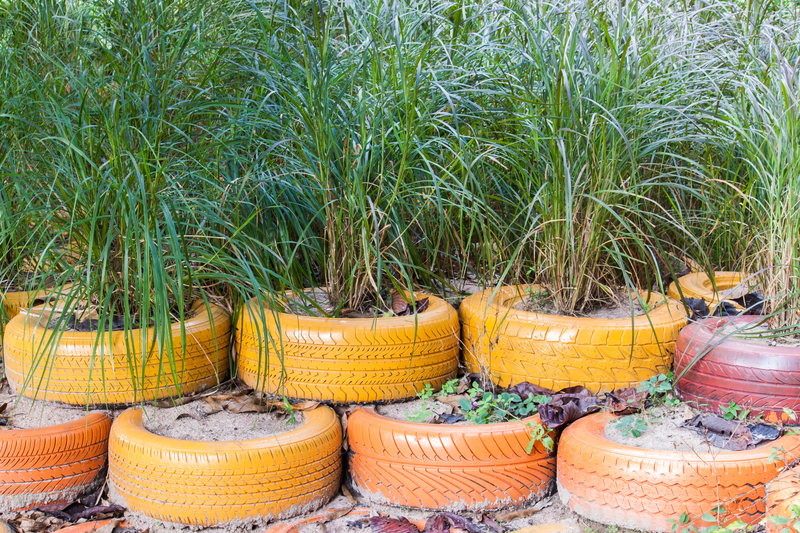Working Green: Strategize to Achieve an Environmentally-Friendly Workplace
In today's eco-conscious landscape, organizations are increasingly recognizing the importance of fostering an environmentally-friendly workplace. Embracing green initiatives not only conserves natural resources and reduces ecological footprints but also promotes employee health, satisfaction, and even cost savings. This comprehensive guide explores how your business can strategically shift toward a greener office culture and sustain positive change.
Why Prioritize a Green Workplace?
Environmental sustainability has evolved from a corporate buzzword to a business necessity. Here are some compelling benefits to transitioning towards a greener workplace:
- Attract and retain top talent who value sustainability and corporate responsibility.
- Reduce operational costs through less waste, lower energy consumption, and efficient resource use.
- Enhance brand reputation and credibility among clients, partners, and customers.
- Comply with environmental regulations and future-proof your organization against tightening eco-standards.
- Boost employee productivity and well-being by providing a healthier, toxin-free environment.

Essential Strategies for an Environmentally-Friendly Workplace
Transforming your workplace into an eco-friendly haven involves adopting a comprehensive approach that includes leadership, daily habits, and technology. Let's explore practical, actionable steps you can implement today.
1. Develop a Green Office Policy
To build a sustainable workplace, it's crucial to establish and communicate a clear green policy. This document should outline your company's environmental objectives, standards, and best practices. Consider including:
- Energy and water conservation directives
- Waste reduction and recycling programs
- Guidelines for sustainable procurement
- Travel and remote working policies
- Employee education and engagement strategies
Regularly review and update your green policy to reflect latest trends and technologies.
2. Adopt Energy-Efficient Practices
One of the most impactful ways to achieve an environmentally-friendly workplace is through thoughtful energy management:
- Switch to LED or energy-saving lighting across the premises.
- Install smart thermostats and sensors to regulate heating, cooling, and lighting based on occupancy.
- Encourage employees to power down computers and electronics when not in use.
- Invest in ENERGY STAR certified appliances.
- Take advantage of natural light and ventilation to minimize artificial lighting and HVAC needs.
3. Reduce, Reuse, and Recycle
Minimizing waste is at the heart of every green workplace strategy. Use the "Three Rs" approach:
- Reduce: Opt for digital documents, minimize printing, and buy in bulk to reduce packaging waste.
- Reuse: Encourage the use of reusable mugs, water bottles, and office supplies.
- Recycle: Set up clearly labeled recycling stations for paper, plastics, e-waste, and batteries.
Educate staff about proper recycling protocols and monitor progress regularly.
4. Promote Sustainable Transportation
Commuting is a significant contributor to workplace emissions. To encourage green commuting options:
- Offer subsidies for public transportation.
- Create secure bike storage and shower facilities for cyclists.
- Support remote or hybrid work arrangements to reduce daily travel.
- Promote carpooling and ride-sharing programs among staff.
- Provide electric vehicle charging stations where feasible.
5. Green Your Purchasing Habits
Sustainable procurement ensures your supplies and services reflect your environmentally-friendly values:
- Partner with vendors who adhere to eco-friendly standards.
- Choose products made from recycled or renewable materials.
- Select office supplies and equipment built for longevity and upgradability.
- Buy in large quantities to reduce packaging waste, but watch for overstocking.
- Avoid single-use plastics; invest in biodegradable and compostable options.
6. Foster Employee Engagement and Education
Success depends on buy-in from all levels. Engage and empower employees to adopt a green mindset:
- Run workshops and training sessions on sustainability.
- Recognize eco-heroes--employees who go above and beyond for the environment.
- Launch "green teams" to lead initiatives and spread awareness.
- Share updates and successes to motivate ongoing efforts.
- Encourage open sharing of new green ideas and solutions.
7. Go Digital: Reduce Paper and Printing
Digitization is a cornerstone of sustainable business practices. Reduce paper use by:
- Integrating digital document management systems.
- Encouraging e-signatures and cloud collaboration tools.
- Implementing policies for minimal necessary printing and double-sided printing as the default.
Digitization not only cuts down on waste but also streamlines workflow and reduces office clutter.
8. Green Cleaning and Indoor Air Quality
An often-overlooked aspect of an eco-friendly office is indoor air quality and the products used for cleaning:
- Switch to non-toxic, biodegradable cleaning products that don't release harmful chemicals.
- Install indoor plants to help filter air and boost moods.
- Ensure proper ventilation and regular maintenance of HVAC systems.
Good air quality maximizes health and productivity while reducing environmental harm.
9. Design with Sustainability in Mind
Workspace design plays a big role in eco-friendliness. Consider:
- Utilizing recycled, low-emission, and sustainably sourced materials for furniture and flooring.
- Adopting modular office layouts to easily accommodate future changes.
- Incorporating green walls, daylighting, and natural decor.
- Maximizing space efficiency to minimize energy use per employee.
10. Responsible E-Waste Management
The demand for technology generates significant electronic waste. Form a plan to:
- Donate or recycle old computers and devices through certified e-waste programs.
- Purchase from manufacturers with responsible end-of-life policies.
- Encourage refurbishment before replacement wherever possible.
Proper e-waste recycling prevents hazardous materials from reaching landfills and supports a circular economy.
Measuring and Enhancing Your Green Impact
Monitoring your progress towards an environmentally-friendly workplace boosts accountability and reveals new areas for improvement. Here's how to measure and amplify your efforts:
Track Key Sustainability Metrics
- Energy and water consumption
- Paper, plastic, and office waste volumes
- Green procurement statistics
- Employee participation in green initiatives
- Carbon footprint reduction trends
Use regular audits, feedback surveys, and smart IoT solutions to collect and analyze data.
Set Goals and Celebrate Progress
Set clear, achievable targets, such as reducing energy use by 10% or reaching 90% recycling rates. Share milestones company-wide to keep enthusiasm high, and recognize departments or individuals who excel. Continuous improvement is the key to lasting green change.
Obtain Green Certifications
Achieving recognized sustainability certifications such as LEED (Leadership in Energy and Environmental Design), ISO 14001, or ENERGY STAR not only validates your efforts but also strengthens your brand's credibility and competitive edge.
Overcoming Common Challenges
Creating a workplace that's truly environmentally-friendly isn't always smooth sailing. Here's how to tackle common obstacles:
- Budget limitations: Start small with low-cost interventions, then reinvest savings into larger projects.
- Employee resistance: Focus on education and highlight personal as well as organizational benefits of sustainability.
- Building restrictions: Work with property managers to advocate for upgrades and greener procedures.
- Lack of expertise: Engage with sustainability consultants or attend green workplace workshops.

The Future of the Green Workplace
Technological advancements and rising environmental awareness will continue to shape the future of sustainable office culture:
- Smart buildings leveraging IoT for real-time energy optimization.
- Remote and hybrid work structures reducing overall energy and commute emissions.
- Circular procurement maximizing reuse and repurposing.
- Employee-driven innovation spurring unique in-house initiatives.
Ultimately, the journey toward an environmentally-friendly workplace is ongoing--a blend of leadership, innovation, and collective action.
Conclusion: Commit to Working Green
Transforming your office into an environmentally-friendly workplace is more than a passing trend--it's a corporate responsibility and a shared commitment to our planet's future. No matter your company's size or sector, you can start making a difference today by:
- Assessing your current practices and identifying quick wins
- Building momentum with well-defined green policies and clear communication
- Engaging every employee on the journey toward workplace sustainability
- Measuring, celebrating, and constantly improving your eco-initiatives
Working green isn't just good for the environment--it's also great for business, people, and society as a whole. Start strategizing for a greener workplace and lead your organization into a more sustainable future.